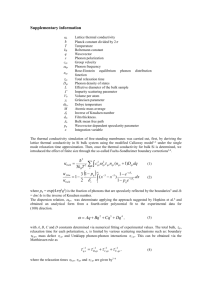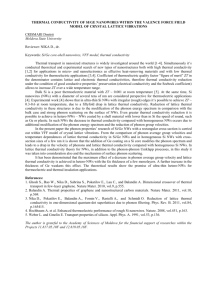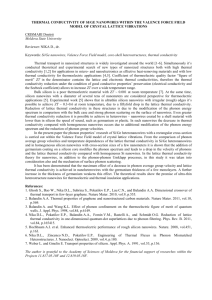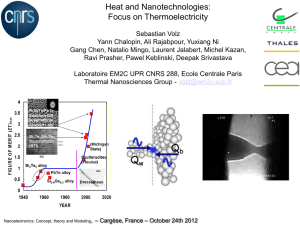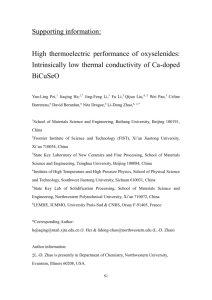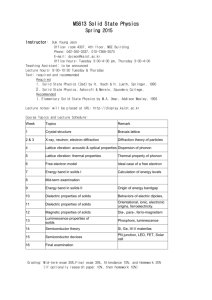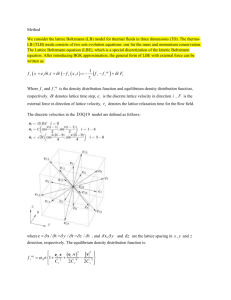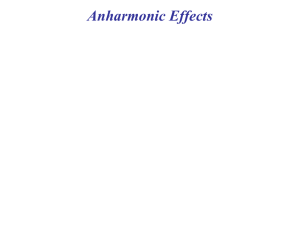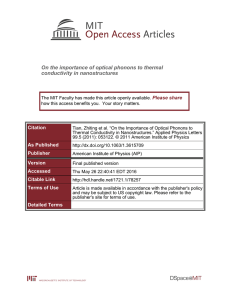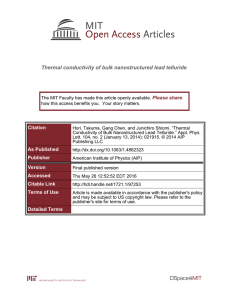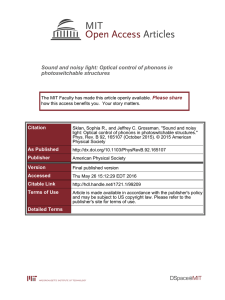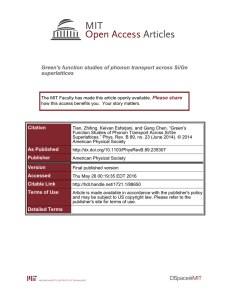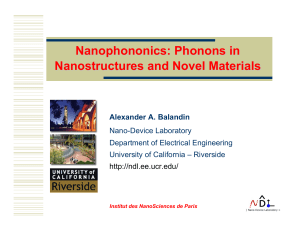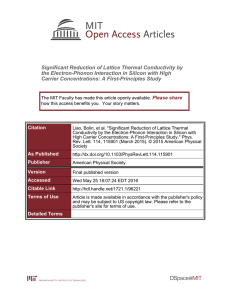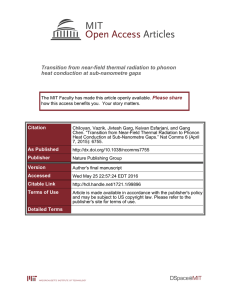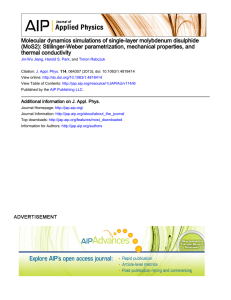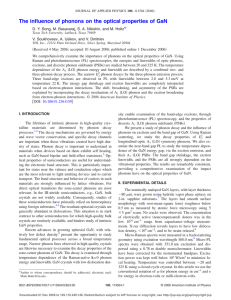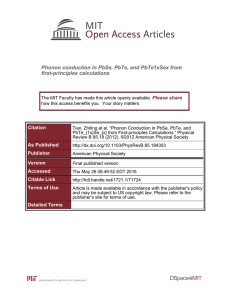фононная теплопроводность в квантовых нитях различного
advertisement
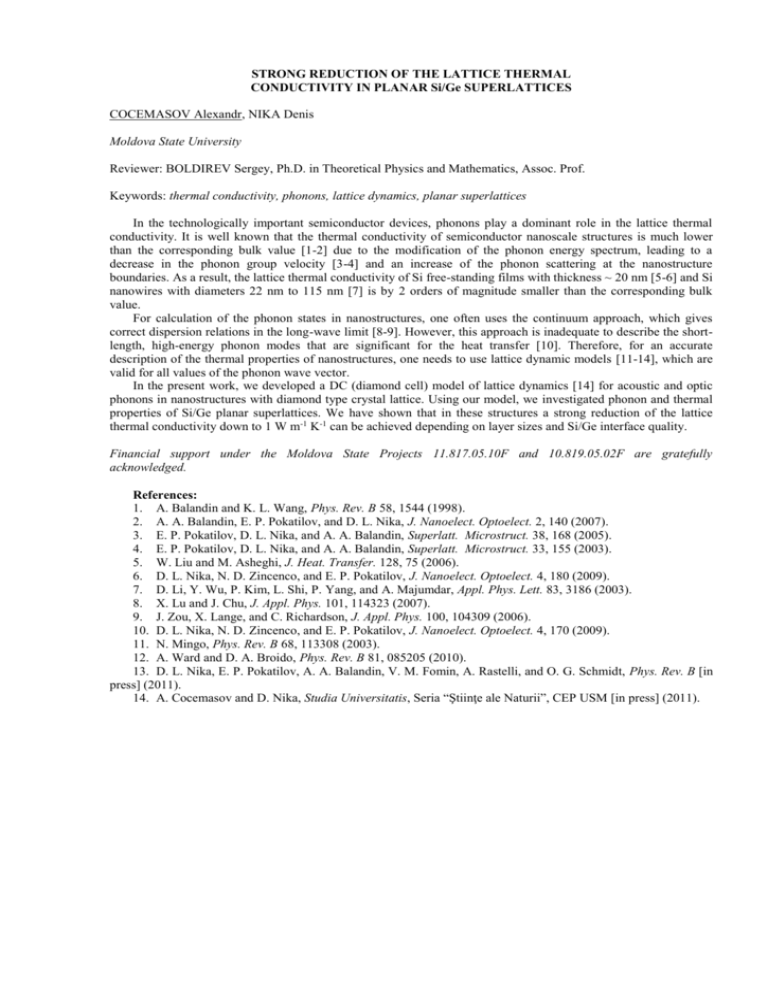
STRONG REDUCTION OF THE LATTICE THERMAL CONDUCTIVITY IN PLANAR Si/Ge SUPERLATTICES COCEMASOV Alexandr, NIKA Denis Moldova State University Reviewer: BOLDIREV Sergey, Ph.D. in Theoretical Physics and Mathematics, Assoc. Prof. Keywords: thermal conductivity, phonons, lattice dynamics, planar superlattices In the technologically important semiconductor devices, phonons play a dominant role in the lattice thermal conductivity. It is well known that the thermal conductivity of semiconductor nanoscale structures is much lower than the corresponding bulk value [1-2] due to the modification of the phonon energy spectrum, leading to a decrease in the phonon group velocity [3-4] and an increase of the phonon scattering at the nanostructure boundaries. As a result, the lattice thermal conductivity of Si free-standing films with thickness ~ 20 nm [5-6] and Si nanowires with diameters 22 nm to 115 nm [7] is by 2 orders of magnitude smaller than the corresponding bulk value. For calculation of the phonon states in nanostructures, one often uses the continuum approach, which gives correct dispersion relations in the long-wave limit [8-9]. However, this approach is inadequate to describe the shortlength, high-energy phonon modes that are significant for the heat transfer [10]. Therefore, for an accurate description of the thermal properties of nanostructures, one needs to use lattice dynamic models [11-14], which are valid for all values of the phonon wave vector. In the present work, we developed a DC (diamond cell) model of lattice dynamics [14] for acoustic and optic phonons in nanostructures with diamond type crystal lattice. Using our model, we investigated phonon and thermal properties of Si/Ge planar superlattices. We have shown that in these structures a strong reduction of the lattice thermal conductivity down to 1 W m-1 K-1 can be achieved depending on layer sizes and Si/Ge interface quality. Financial support under the Moldova State Projects 11.817.05.10F and 10.819.05.02F are gratefully acknowledged. References: 1. A. Balandin and K. L. Wang, Phys. Rev. B 58, 1544 (1998). 2. A. A. Balandin, E. P. Pokatilov, and D. L. Nika, J. Nanoelect. Optoelect. 2, 140 (2007). 3. E. P. Pokatilov, D. L. Nika, and A. A. Balandin, Superlatt. Microstruct. 38, 168 (2005). 4. E. P. Pokatilov, D. L. Nika, and A. A. Balandin, Superlatt. Microstruct. 33, 155 (2003). 5. W. Liu and M. Asheghi, J. Heat. Transfer. 128, 75 (2006). 6. D. L. Nika, N. D. Zincenco, and E. P. Pokatilov, J. Nanoelect. Optoelect. 4, 180 (2009). 7. D. Li, Y. Wu, P. Kim, L. Shi, P. Yang, and A. Majumdar, Appl. Phys. Lett. 83, 3186 (2003). 8. X. Lu and J. Chu, J. Appl. Phys. 101, 114323 (2007). 9. J. Zou, X. Lange, and C. Richardson, J. Appl. Phys. 100, 104309 (2006). 10. D. L. Nika, N. D. Zincenco, and E. P. Pokatilov, J. Nanoelect. Optoelect. 4, 170 (2009). 11. N. Mingo, Phys. Rev. B 68, 113308 (2003). 12. A. Ward and D. A. Broido, Phys. Rev. B 81, 085205 (2010). 13. D. L. Nika, E. P. Pokatilov, A. A. Balandin, V. M. Fomin, A. Rastelli, and O. G. Schmidt, Phys. Rev. B [in press] (2011). 14. A. Cocemasov and D. Nika, Studia Universitatis, Seria “Ştiinţe ale Naturii”, CEP USM [in press] (2011).


